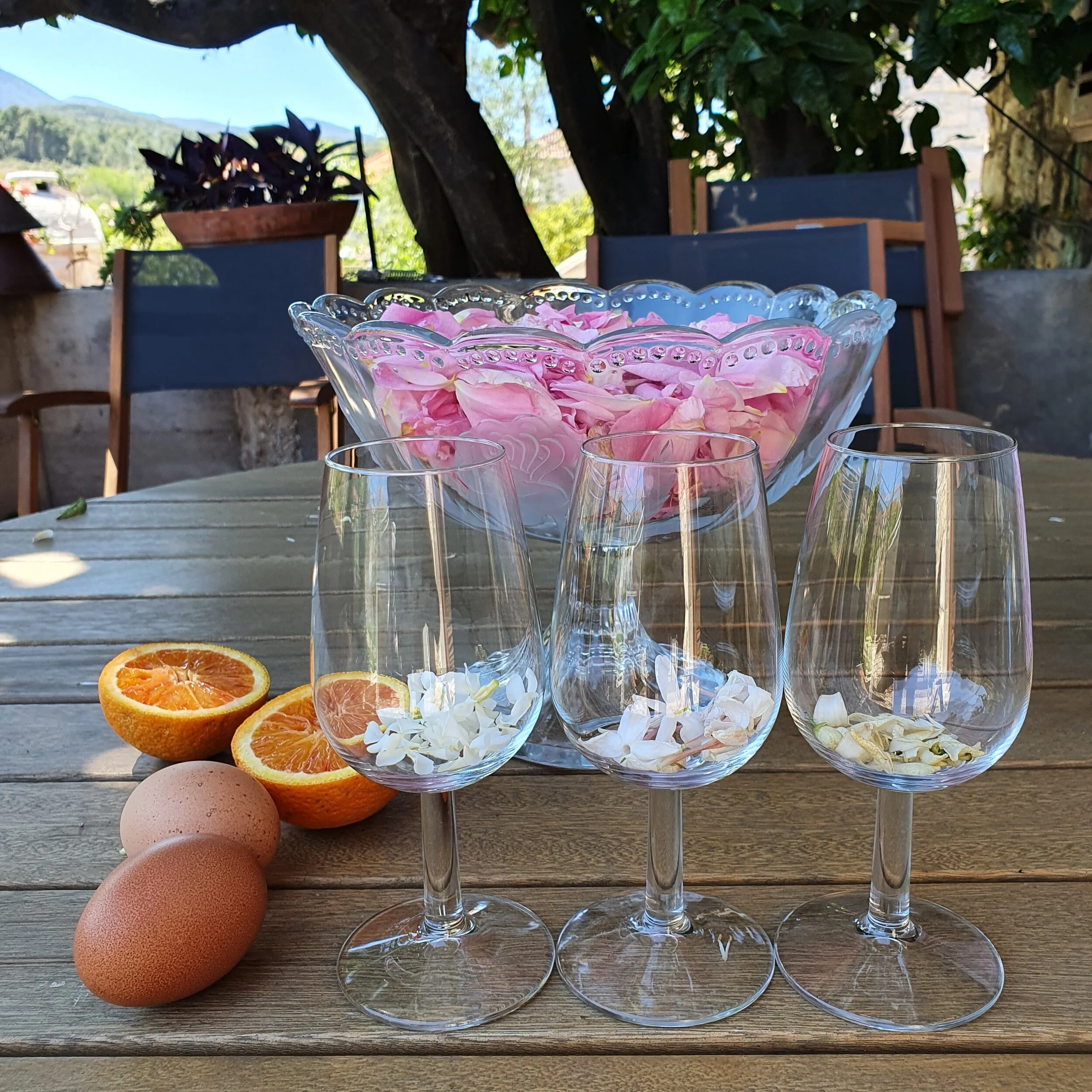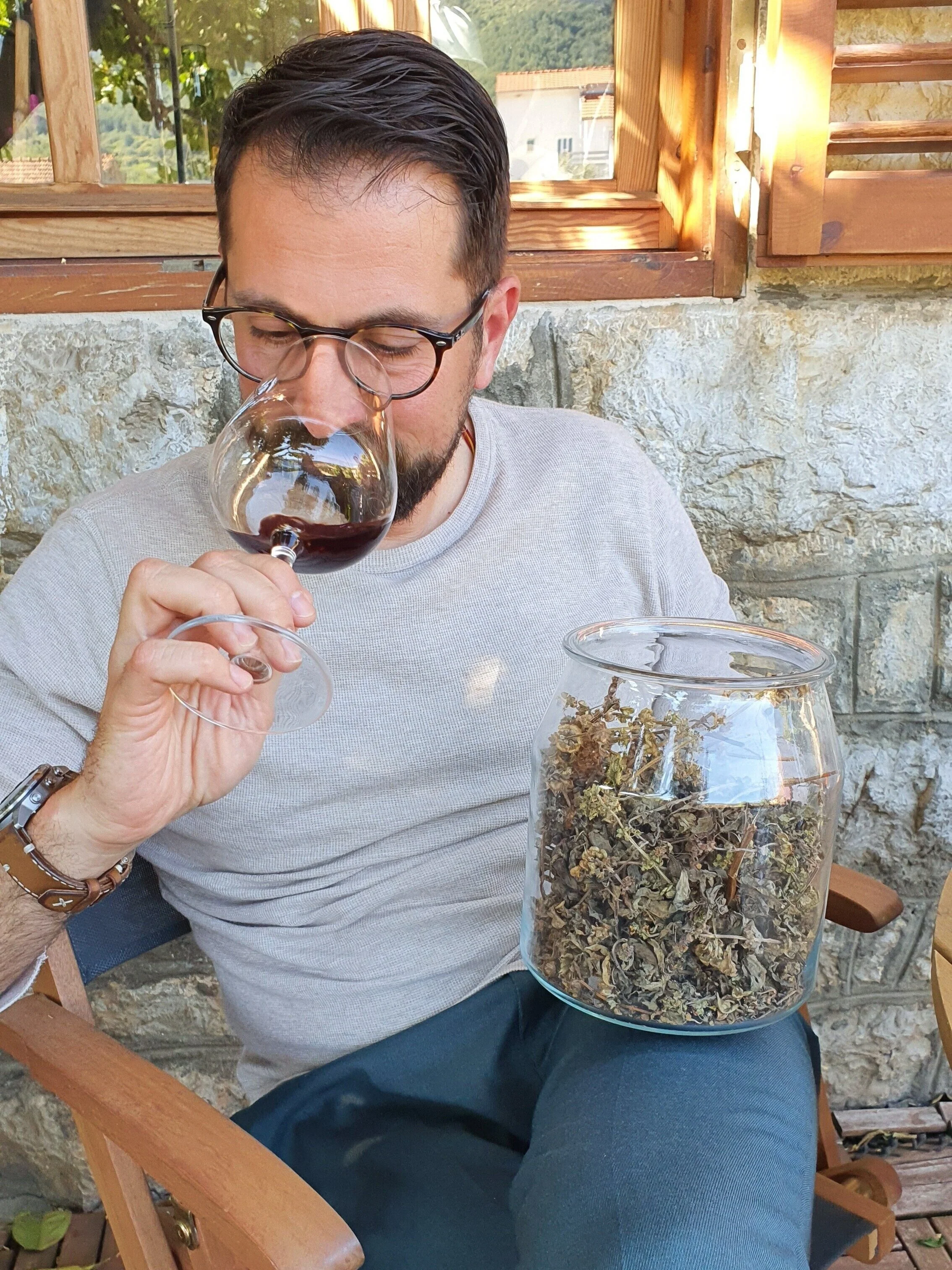How to recognise aromas in wine like a connoisseur
In the backyard of the Duboković winery in Jelsa on the island of Hvar. Three types of jasmine in the glasses rose petals and wild orange from the tree above the terrace.
People who are outside of the wine world often consider wine descriptions to be full of fluffy nothingness, purveyed by those who want to come across as knowledgeable, snobbish and sometimes even obscurantist.
Surely, there must be some among the wine lovers and connoisseurs who do it for the wrong reasons, or who do it wrongly, but most of the people I know in the industry spend years developing their aroma libraries and practising their vocabularies in order to be able to explain the complexity and richness of wine in just a couple of sentences. On the other hand, I find some descriptions to be utterly ridiculous as well, but that should not stop you from trying to build that aroma library, if not for the wine then for the better understanding of the world around you. After all, we don't have fifty senses, but only five, and olfactory and gustatory senses can be so much more pleasurable when we practice them.
Zoran smelling dried oregano to find the notes in Medvid.
So, how do you do it? Just smell things, fruits, flowers and herbs in different stages, ripe, overripe, cooked, dried, fermented. Whatever you can get a hold of, especially when you know that it is of good quality, and make memories. After some time, the aroma profiles will just start opening themselves up to you. For a better experience, smell it from a wine glass, the aromas and the memories will be more intense.
Fresh herbs and flowers from Ivo’s garden.
From the left to the right, in the wine glasses, in this improvised olfactory tasting that we did a couple of Sunday's ago at Ivo Duboković we had chamomile (some South African Chenin Blanc wines), rose petals (a very common aroma found in wine, very distinctly present in Gewürztraminers), Chinese star jasmine (some Viogniers, some sweet wines made from Muscat Blanc à Petits Grains), Spanish royal jasmine (some Albarino wine, some cool climate Rieslings, some Assyrtiko wines), orange blossom (fresh Rieslings, Viogniers and Chardonnays). Chamomile, jasmine, orange blossom belong to the ‘white flower’ cluster of descriptors, alongside honeysuckle and elderflower. Further on, we had nine more glasses with "herbaceous aromas" starting with the old bush basil, purple basil, great basil (Sauvignon blanc wines, dry Rieslings), dried basil, sage (aroma almost interchangeable with garrigue, found in the reds from the coastal Mediterranean regions, southern Rhone reds, but also some orange wines like some of the older Moj Otok and Moja M from Ivo's cellar), fresh hay (smell of mouldy hay can be indicative of microbial spoilage or Brettanomyces contamination, but fresh hay is present in the wine that has aged "on the lees", like Champagne wines, but also in some old, barrel-aged Chardonnays), wild thyme (some Pinot Noirs), garden thyme (some Sauvignon Blanc and Cabernet Francs) and fresh oregano (some aromatic Mediterranean whites, but also some Carmenere and Cabernet Sauvignon wines).
Zoran live from Ivo Duboković garden.
Above you can see Zoran live from Ivo Duboković garden talking about aromas in wine and how to smell them. You can also see the video here on our Instagram.



